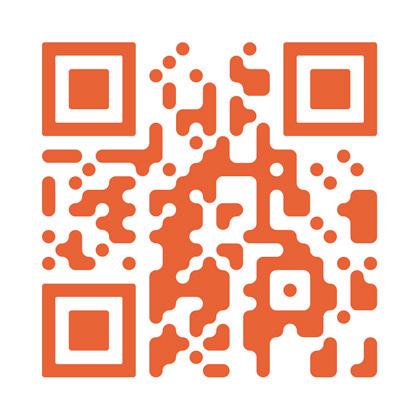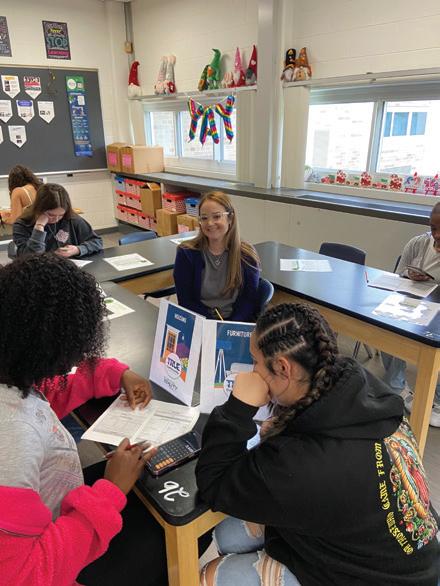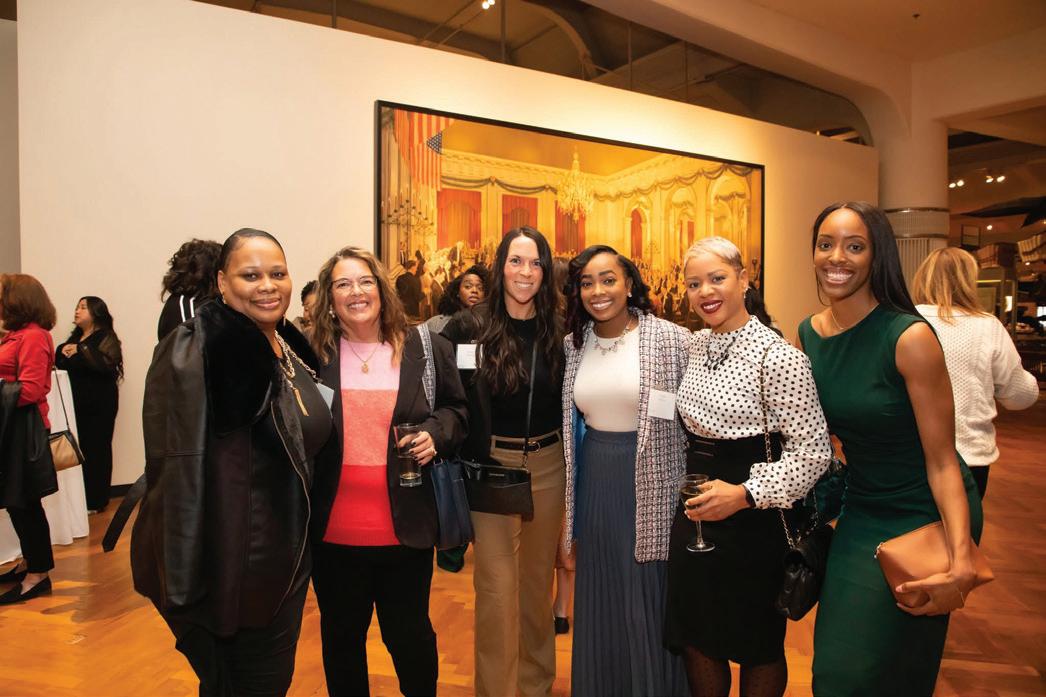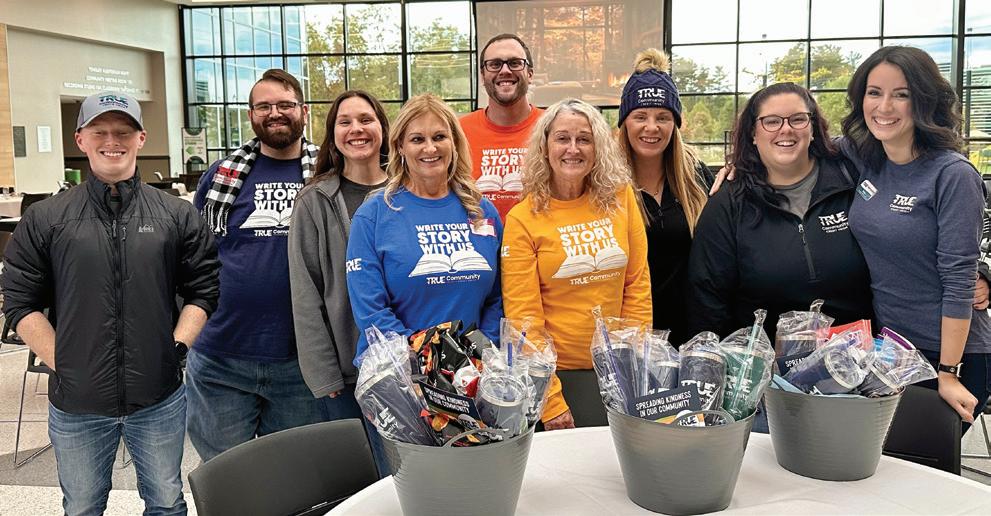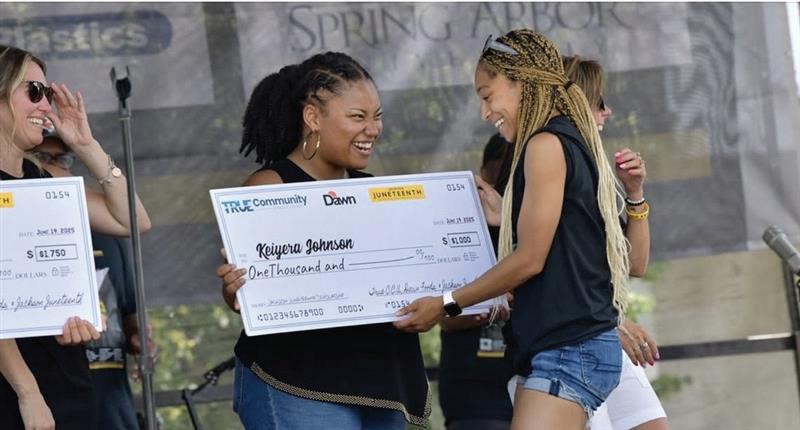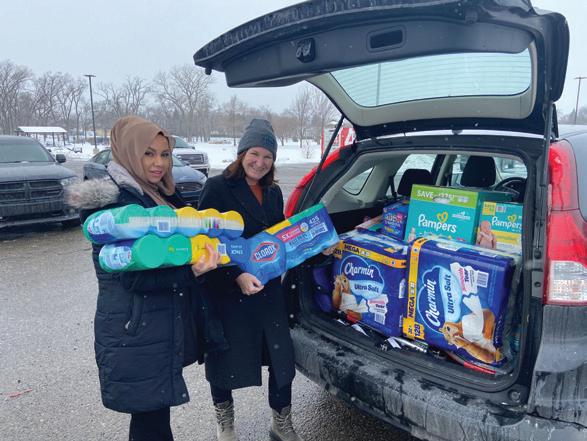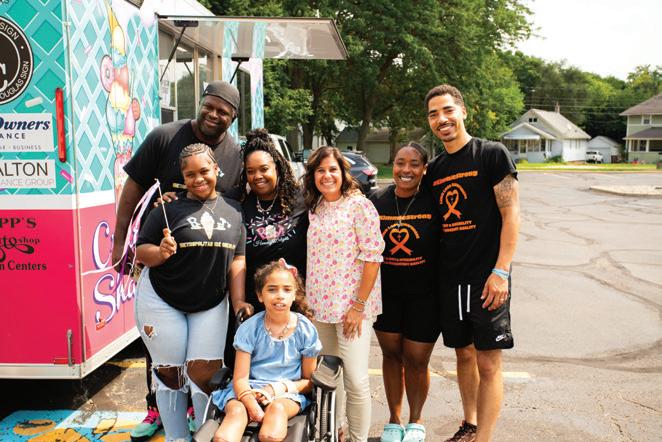














Every fall, colleges invite their people “home.” Not just to childhood addresses, but to the places that helped shape them—the quads where friendships formed, the classrooms where confidence grew, the

sidelines where a whole future started to feel possible. From HBCU yards to Big Ten lawns, these weekends stitch together memory and momentum for families across Michigan and beyond.
Homecoming looks like changing
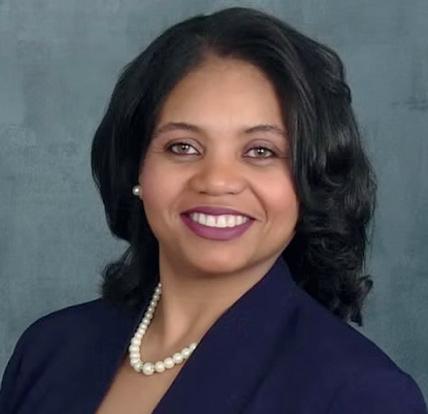
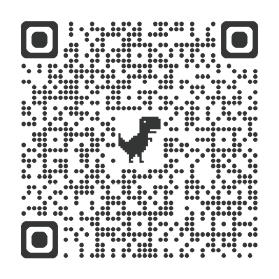


leaves, drumlines in cool air, and a sea of sweatshirts at dawn. It also looks like something quieter: space for students and alumni to meet informally, compare notes, and spark opportunities that can turn into jobs or mentorships months later. Career experts often point out that homecoming is uniquely powerful, networking, shared experiences and shared pride lower the temperature
ichigan is a mosaic—industrial grit and university quads, farmland and lake towns, immigrant corridors and tight-knit church blocks. That mix shows up every election year, but especially in cycles like 2025 when local decisions take center stage. City councils, school boards, library trustees, transit millages—these are the races that set the tone for our neighborhoods. They shape classrooms, public safety strategies, parks,


Michigan’s geography made it a final gateway to freedom for thousands seeking safe passage to Canada. Churches, homes, and meeting halls across the state became sanctuaries. Ordinary people lighting lamps in windows, whispering directions, and opening doors at risk to themselves.
Along the Detroit River, the last miles were often the most dangerous—and the most determined. Faith communities offered food, maps, and prayer. Farmers hid travelers in wag-
ons; teachers passed notes and news; Black and white abolitionists worked in concert with a single aim: dignity. The Underground Railroad was never just tunnels and trapdoors. It was organization, courage, and community discipline. The legacy remains a blueprint: when neighbors unite across backgrounds to protect one another, freedom moves from idea to action.
Reflection prompt: Visit a local museum, church, or historical marker this fall, and tell a young person what you learned.
Historically Black Colleges and Universities (HBCUs) have long served as beacons of education, empowerment, and opportunity for African Americans in the United States. Founded during an era when higher education was largely inaccessible to Black students due to segregation, HBCUs became critical institutions in shaping Black intellectual, cultural, and social life. Today, they remain vibrant communities dedicated to fostering leadership, creativity, and success among their students.
The Origins of HBCUs
HBCUs were born out of necessity during the mid-19th century. In the decades leading up to the Civil War, enslaved African Americans were legally prohibited from receiving an education, while free Black people faced institutionalized racism that barred them from attending most colleges and universities. Recognizing the need for
higher education within the Black community, several individuals, organizations, and religious groups took action.
The first HBCU, Cheyney University of Pennsylvania, was established in 1837 as the Institute for Colored Youth. It was founded by Richard Humphreys, a Quaker philanthropist, to provide Black youth with training in trades and agriculture. Soon after, Lincoln University in Pennsylvania (1854) and Wilberforce University in Ohio (1856) followed. Wilberforce, notably, became the first HBCU owned and operated by African Americans when the African Methodist Episcopal Church took control in 1863.
Following the Civil War, the Second Morrill Act of 1890required states with racially segregated public schools to provide land-grant institutions Scan to read full story


As we observe Breast Cancer Awareness
Month, it is vital to recognize the stories of resilience within the Black community, where breast cancer disproportionately affects women at higher rates and often with more aggressive forms of the disease. This month, we highlight the brave individuals who have not only survived breast cancer but also turned their experiences into powerful advocacy for awareness, early detection, and better healthcare access for Black women.
Breast cancer is the most common cancer among women in the U.S., but the statistics are particularly concerning for Black women, who are 40% more likely to die from breast cancer compared to their white counterparts. Despite these challenges, Black women across the country are standing strong—sharing their journeys and fighting to ensure that others in their community receive the care, support, and education they need. Here are a few remarkable stories of Black breast cancer survivors whose voices are making a difference.
Ericka Hart, a Black queer femme, and sexuality educator, was diagnosed with bilateral breast cancer

at the age of 28. Facing cancer at such a young age was daunting, but Ericka transformed her diagnosis into a platform for awareness. Following a double mastectomy, she began speaking publicly about the challenges that Black women and LGBTQ+ individuals face in the healthcare system.
Ericka’s boldness—often baring her scars in public as a symbol of both her survival and advocacy—has sparked vital conversations about health disparities. She emphasizes the importance of self-advocacy and challenges the biases that often make accessing quality healthcare more difficult for Black women.
Her message: “It’s not just about surviving cancer,
but about surviving in a healthcare system that doesn’t always see us. We deserve care, respect, and attention in all spaces.”
As a trailblazing model and the first Black woman to appear on the cover of Vogue, Beverly Johnson has long been a symbol of beauty and success. In 2012, she faced a different kind of battle when she was diagnosed with early-stage breast cancer. Fortunately, due to regular screenings, her cancer was detected early, and she was able to undergo treatment.
Johnson has since become a powerful advocate for breast cancer awareness, especially within the Black community. She frequently emphasizes the importance of regular mammograms and early detection. Her high-profile platform has allowed her to reach thousands of women with the critical message that early detection can save lives.
Her advice: “Do not put off getting a mammogram. Early detection is key, and it can make all the difference in your treatment and survival.”
Scan to read full story

Breast Cancer Awareness Month paints the fall calendar pink for a reason: early action saves lives, and community support eases the journey for those in treatment and recovery. Whether you’re scheduling your first screening, cheering on a survivor, or honoring a loved one, there are simple, meaningful steps every family can take.
Why awareness still matters
Breast cancer touches nearly every circle—mothers and daughters, neighbors, co-workers, church members, and yes, men too (though it’s less common). Awareness isn’t just about ribbons; it’s about early detection, informed choices, and making sure no one walks alone.
Skin changes start with prevention & early detection

Know your normal. Become familiar with how your breasts look and feel. If something seems off—lumps, changes in skin, nipple discharge—call your healthcare provider.
Talk to your doctor about mammograms. Ask when to begin routine screening based on your age, personal and family history, and risk factors.
Ask about your risk. If you have close relatives who’ve had breast or ovarian cancer, discuss whether genetic
counseling or earlier screening makes sense.
Care for the basics. Nourishing food, regular movement, sleep, and stress management support overall health.
Note: Screening recommendations can vary. Always follow guidance from your healthcare provider.
to support someone in treatment
Show up consistently. Offer rides, meals, childcare, or help with errands.
Listen more than you fix. Let your loved one set the tone for conversations.
Coordinate care. Group chats or meal trains prevent duplication and burnout.
Respect privacy. Ask before sharing updates or photos online.
Mind the practicals. Gift cards for gas, groceries, or pharmacies go a long
Faith, community, and courage
Prayer lines, support groups, and survivor ministries turn fear into fellowship. Consider dedicating a Sunday in October to honor survivors, remember loved ones, and encourage screenings,then keep the conversation going year-round.
If you need help
Start with your primary care provider or local health department for screening locations and cost-assistance programs. National organizations like the American Cancer Society and Susan G. Komen also offer education and support services.
“Yesterday I dared to struggle. Today, I dare to win.” — Bernadette Devlin
Meet Pastor Terence Hawkins and Co-Pastor Shantelle Hawkins of Mt. Zion Church of Deliverance, a faith-leadership powerhouse answering the call to spread the gospel and touch the heart of the community through outreach. Their approach blends legacy and holiness with music, empathy, and modern tools, meeting people where they are and inviting them into a life made whole.
The Chronicle’s connection to Mt. Zion began at Zion Fest, a neighborhood celebration alive with music, laughter, and the easy warmth of a family reunion. Publisher Yanice Jackson attended with her children and watched them lean into the joy of the day. “We stumbled onto Zion Fest while parking for another event across the street,” she said with a smile. “Once we walked in, my kids didn’t want to leave. We were drawn to the spirit of the place, faith meeting action, love not only preached but practiced.”
For Yanice, the moment felt full-cir-

cle. Nearly 40 years ago, her parents founded The Chronicle Newspaper during the height of the War on Drugs to challenge harmful stereotypes and amplify local voices. “We wanted to be a voice for the community,” she said. “To highlight teachers, business owners, and pastors, the people doing the work.”
With The Chronicle expanding regionally, Jackson felt led to partner with Mt. Zion, combining platforms to lift good
information, share resources, and keep underserved neighbors connected.
After attending the event, Yanice felt led to reach out to the church leadership. After leaving a couple of messages, she was able to reach someone from the church and set up a time to meet with Pastor Terence and Co-Pastor Shantelle Hawkins. "It was an absolute pleasure to sit down with the Hawkinses, as I was able to learn so much about the dynamic couple and the ministry." Said Yanice "I was excited to share my vision of connecting communities and to learn how both The Chronicle and Mt. Zion had quite a bit in common. I learned we both carry a significant legacy with the ability and willingness to combine the old with the new, allowing us to meet people where they are and carry out the missions commissioned to us by God."
Quoted Jackson.
Furthermore, Yanice learned how Mt. Zion’s sanctuary is more than an address for Pastor Terence Hawkins; it’s home. He grew up in the church he
now leads, was ordained by the longtime shepherd who pastored him as a child, and watched his father serve as pastor for 25 years. When illness required a transition, seasoned elders steadied the pulpit; in time, the mantle passed to him. That inheritance shaped his leadership: seek wisdom, invite counsel, and carry the church’s name with care.
“We believe the gospel should touch every part of life; economic, educational, relational, mental, and physical,” he said. “Jesus came so that we could have life, and that means abundant life in all its forms.” Growth, he teaches, is a rhythm of taking on and letting go; embracing what sharpens judgment and releasing what dulls it. “Not everything lawful is wise. If people can’t trust your walk, they won’t trust your words.”
Accountability is non-negotiable. Hawkins keeps
Mindfulness has become a buzzword in today’s culture, but it has religious roots and can be an inspiring tool for Christians. The mainstream practice focuses on helping individuals ground themselves in the present, sharpen their focus, and calm their minds and hearts. When paired with Christianity, it supports a deeper connection with God and His word. Here, we’re discussing a few powerful mindfulness activities for Christians that you might want to integrate into your spiritual practice.
Start Your Day With Scripture and Stillness
One of the most powerful ways to

practice mindfulness as a Christian is to begin each day with Scripture. Here’s how: simply pick a verse that resonates with you and meditate on it in stillness. Sit quietly for a few minutes, breathe deeply, and repeat the verse in your mind. This simple act helps you get into the habit of memorizing Scripture and
sets the tone for a Christ-centered day.
Mindfulness and gratitude are complementary practices. Spend a few moments each evening in prayer, thanking God for the blessings in your life. Be specific. Whether you enjoyed a really nice meal, had a good conversation, felt relief from a chronic pain, or noticed something beautiful in your backyard, nothing is too small. By rejoicing in the details of your day, you train yourself to focus on God’s blessings that make your life unique.
The best way to connect with God is
Scan to read full story
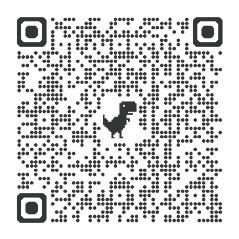
to step away from the busyness of life, so head outside for a prayer walk. Pay attention to His creation as you walk. Notice the leaves on the trees, the warmth of the sun, or the gentle breeze. Talk to God as you move, expressing your thoughts and listening for His guidance.
Bring mindfulness to your faith by journaling. Write down your prayers, thoughts, and reflections on Scripture. Journaling allows you to slow down, process your Scan to read full story

The holidays bring joy, traditions, and togetherness—but they can also bring financial stress if you’re not prepared. A thoughtful holiday budget helps you celebrate without overspending or facing a post-season money hangover. Here are some tips to keep your finances merry and bright:
Set a total budget: Decide the maximum amount you can afford to spend overall. The general rule of thumb is no more than 1% of your annual income for holiday spending.
Save ahead: Even a small weekly deposit into a holiday fund adds up by December.
Track spending in real time: Use digital banking tools or budgeting apps. You can find a free, fill-

able, and reusable holiday budgeting worksheet from our partners at GreenPath Financial Wellness at TRUECCU.com.
Expect surprises: Budget a small cushion for un-
planned expenses (extra gifts, shipping costs, etc.).
Plan meals: Hosting? Create menus in advance to avoid costly impulse buys at the store.
Decorate on a dime: Reuse what you have, swap with friends, or look for secondhand treasures.
Remember experiences matter: Time with loved ones often means more than expensive gifts.
Give the gift of service: Acts of kindness or shared activities can be priceless.
With a little planning and mindful spending, you can enjoy the holidays without financial stress. By setting a budget, tracking expenses, and focusing on what truly matters, you’ll keep both your wallet and your holiday spirit full.
and raise the odds of a real connection.
A (Friendly) Origin Story
Who “invented” homecoming? Depends on who you ask. Several universities—Baylor, Illinois, and Missouri among them—point to early 1900s gatherings that centered on football and alumni return. Missouri is frequently credited with popularizing the idea in 1911, when coach Chester Brewer called graduates to “come home” for the rivalry game and a weekend of rallies, speeches, and school spirit that drew thousands. The model spread quickly across the Midwest and South.
But traditions of returning run deeper, especially at historically Black colleges and universities. Long before the term “homecoming” took hold, HBCUs were hosting fall gatherings that did essential work—sustaining schools, honoring collective memory, and weaving alumni networks at a time when the wider world too often closed its doors.
cially
For Michigan families, the October map zigzags. Some head south to alma maters like Howard, Spelman, Tennessee State, or Central State—campuses
that have welcomed generations from Detroit, Grand Rapids, Lansing, and beyond. Others turn toward Ann Arbor, East Lansing, Kalamazoo, Ypsilanti, Big Rapids, and Houghton, meeting old classmates on familiar lawns and crowded streets. The rituals vary; yard shows and step shows here, pep rallies and parades there—but the heartbeat is shared: reunion, renewal, and the joyful noise of being together.
At HBCUs, homecoming is more than a schedule, a living archive.
Marching bands tell stories in brass and motion. Alumni tents become career corners. Divine Nine strolls turn sidewalks into intergenerational classrooms. Fashion, food, and music pass down hand to hand. The weekend feels part block party, part family reunion, part affirmation that these institutions remain crucial engines of access and excellence.
On the Quad: Civic Classroom & Local
Scan to read full story

housing, and how our cities welcome new business and protect long-time residents.
Across the state, community groups are preparing for a busy season of forums, nonpartisan info sessions, and civic-learning events. The work looks different in each place, but the goal is shared: help neighbors understand what’s on the ballot, how local government works, and where to find trustworthy information.
Detroit & Metro: Neighborhood coalitions and block clubs often partner with libraries and rec centers to host Q&As on city services, housing stabilization, and small-business corridors. For many residents, these conversations connect public policy with the everyday realities of transit access, affordability, and safety.
Grand Rapids & West Michigan: Faith communities and nonprofits emphasize multilingual outreach and newcomer engagement alongside discussions on growth, zoning, and equitable development.
Lansing & Mid-Michigan: State workers, students, and longtime residents meet at the crossroads of policy and practice—how state decisions trickle down to city streets, and how school boards set priorities for the next generation.
Ann Arbor/Ypsilanti: University life blends with union halls, research labs, and arts spaces. Energy policy, climate resilience, and academic-town affordability are frequent themes, Kalamazoo & Battle Creek: Philanthropic partnerships and neighborhood associations put youth opportunities and
workforce pipelines in the spotlight. Jackson & Surrounding Communities: Civic circles lean on church networks and service clubs to discuss infrastructure, family supports, and the future of small-city economies. The throughline: local government isn’t abstract. It’s potholes filled—or not. It’s whether your child’s classroom has a para-educator.
It’s the bus that gets you to second
Scan to read full story

OPENING SOON- 24/7 EMERGENCY CARE

Opening this fall, Eaton County residents and nearby communities will have 24/7 access to top-notch emergency care staffed with board-certified physicians and a highly trained medical team. From minor injuries to complex emergencies, we are equipped to provide the care you need, close to home.
Additionally, the center will offer primary care and specialty services, as well as a full range of advanced diagnostic imaging and lab services, including a mobile MRI machine, for rapid diagnosing and treatment.
Learn more about how we're bringing faster care to your neighborhood by visiting mclaren.org/grandledge.
LOCATED AT: 6900 Saginaw Hwy. Grand Ledge, MI 48837




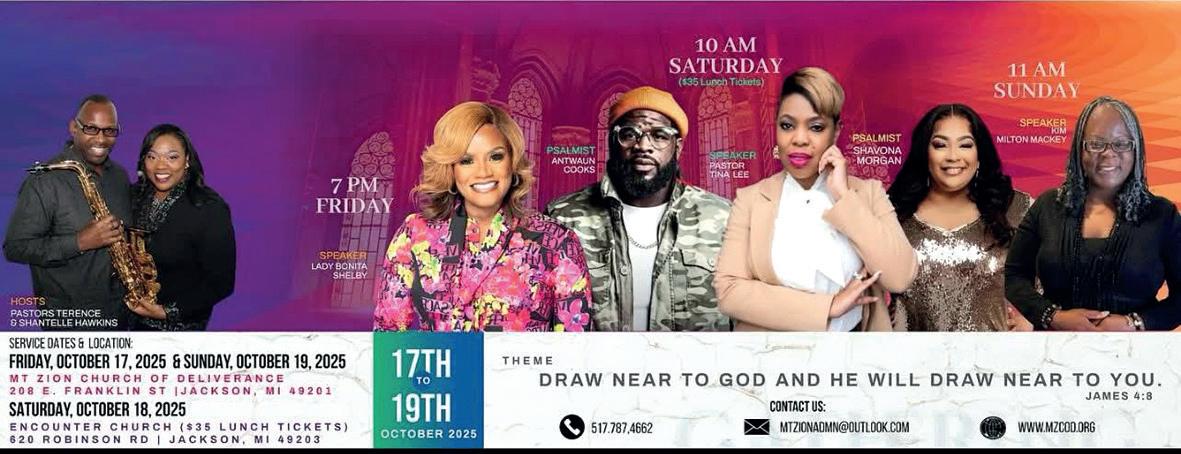
Nothing beats spending time with loved ones. Family moments become even more special when your home provides warmth and comfort to everyone. Creating a cozy space for family gatherings doesn't require a complete home makeover or expensive renovations. Small, thoughtful changes can transform any room into a gathering spot where memories happen naturally.
To make your home feel inviting and warm, consider these tips for a cozy atmosphere.
Colors set the emotional tone of your space. Warm earth tones like deep oranges, rich browns, and golden yellows create an atmosphere that draws people together. These hues make rooms feel more intimate, encouraging conversation and connection. Paint an accent wall in your living room with a warm terracotta
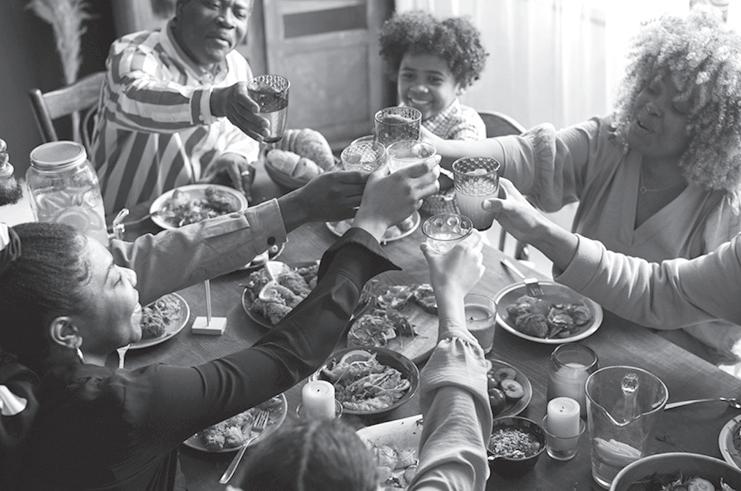
shade, or add throw pillows in burnt orange to instantly change the mood.
Here are a few simple ways to incorporate warm tones into your space:
Layer warm colors through textiles and accessories
Mix different shades of the same color family
Add pops of deep jewel tones for richness
Comfort comes through touch, and
layering different textures makes your family gathering space feel welcoming. Combine chunky knit blankets with smooth leather furniture, or pair a plush area rug with wooden coffee tables. These contrasting textures add visual interest while making the space feel lived-in and comfortable.
Families gather better when everyone has a comfortable spot. Move beyond the traditional sofa arrangement and add floor cushions, bean bags, or ottomans that can double as extra seating. This flexibility accommodates different ages and preferences while encouraging more relaxed interactions.
Nothing says "family" like displaying the memories you've created together. Create a gallery wall with family
photos, display kids' artwork, or showcase souvenirs from family trips. These personal elements make your space unique and give everyone something to talk about when they gather. Don't forget practical maintenance tasks during your cozy space preparation. When the weather gets cooler, clean your baseboard heaters and covers to maintain both warmth and the fresh atmosphere you've worked to create.
Harsh overhead lighting kills the cozy mood faster than anything else. Replace bright ceiling fixtures with table lamps, floor lamps, and candles that cast a warm glow. Multiple light sources at different heights create depth and allow you to adjust the ambiance for different activities. Scan to read full story
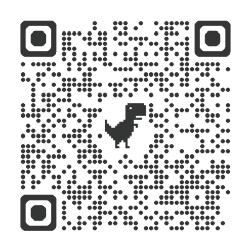
BY YANICE Y. JACKSON
In a season of homecomings and hope, we are revisiting a favorite Chronicle feature, young artist Jaylei. Her canvases glow with color and courage, and her story reminds us why creative voices matter in every Michigan city. From sketchbook to community showcases, Jaylei paints what she wants to see in the world, and families recognize that spark the moment they turn the page. Enjoy this encore of her story, and consider how we can all help the next young artist pick up a brush.
For muralist and studio owner Jamari Taylor, art has always been more than paint on a wall or lines on a canvas; it has been a pathway to freedom, healing, and connection. Her journey began in the 11th grade when she first picked up a brush in art class. “I felt like I was in heaven,” she recalls. That feeling of liberation set her on a path of creative exploration, leading her to embrace artistry as not only a career but

Jamari holds a BA in Studio Arts with an emphasis in Illustration from Grand Valley State University, and her body of work reflects both technical skill and emotional depth. Her artistry has stretched far beyond her studio walls:
She has completed over 20 murals across Michigan, from community centers to university halls.
came part of Grand Valley State University’s permanent collection, ensuring her message of empowerment will resonate with generations to come. These murals are more than images — they are living testaments to history, community resilience, and the beauty of storytelling through art.
also a calling.
Today, Jamari stands as the proud founder of Jaylei Art, with studios in Battle Creek and Grand Rapids, where she has created vibrant, welcoming spaces that blend creativity with community care. The name Jaylei is itself a reflection of identity — a combination of her given name and childhood nickname, symbolizing her personal journey and the inclusive spirit of her work.
In 2022, she painted Sunshine as part of the Lansing Art Gallery & Education Center’s ArtPath project, a public mural that brought color and joy to the city’s river trail.
She created a mural honoring journalist and activist Ida B. Wells for Calvin University’s Sociology and Social Work Department.
Through the Color The Creek festival, her work was commissioned by the W.K. Kellogg Foundation Headquarters in Battle Creek.
Her mural Tell Us We Matter be-
While Jamari’s murals are widely celebrated, it is in her studios that her vision truly comes alive. Jaylei Art is more than an art business — it’s a sanctuary.
Jamari has intentionally shaped her Battle Creek and Grand Rapids studios as spaces of healing, creativity, and inclusivity. She offers art classes, workshops, and private sessions that invite people of all ages to explore creativity as a form of self-expression and personal growth.

HBCU stands for Historically Black Colleges and Universities. These schools were founded to educate Black students during segregation, and today they welcome students of every background and faith. They are known for strong teaching, close mentoring, and a deep sense of community.
Why students choose HBCUs: Many students feel seen and supported from day one. Campus life builds leaders in STEM, business, the arts, education, and public service. A powerful alumni network offers advice, internships, and job leads.
How to pick a school that fits: Compare academics and accreditation, class sizes, research options, and graduation rates. Look at campus culture, student groups, marching band, Divine Nine organizations, faith communities, and service traditions. Consider location, travel from Michigan, local cost of liv-

ing, and internship access.
Apply smart: Request transcripts and recommendations early, track priority deadlines, and file the FAFSA as soon as it opens. In your essays, show how your goals match the school’s mission and highlight service, leadership, and resilience. Stack scholarships from the campus, local community foundations in Detroit, Lansing, Grand Rapids, and Jackson, and national partners such as UNCF and



the Thurgood Marshall College Fund.
If you are heading to an HBCU: Plan finances early, compare aid offers line by line, and budget for travel and breaks. Pair your major with a service or research focus that matters to you. Use your first 90 days well, meet professors, join two student groups, visit career services by week three, and secure a campus job if needed. Build two communities by keeping Michigan ties
strong through summer internships, professional groups, churches, and mentors.
If you are studying in Michigan, you can still benefit from the HBCU network. Attend HBCU alumni chapter events in Detroit, Lansing, and Grand Rapids. Join band exhibitions, scholarship banquets, service days, and Classic watch parties. Create your pipeline on your campus through groups like NSBE, NABA, SHPE, BLSA, and the student government, then ask HBCU alumni for mock interviews and portfolio reviews.
Career power moves: Intern early and often with Michigan employers in automotive, health care, education, finance, and government. Keep LinkedIn current, connect
Scan to read full story
Homecoming is the most natural networking moment of the year; no name tags required. Use it to turn quick conversations into real opportunities.
• Make a short list. Identify 5–7 alumni or professors you’d like to meet.
• Update your one-pager. Refresh your résumé or portfolio link.
• Draft your line. “I’m a junior in biology exploring research roles in public health—any advice on where to start?”
• Show up early. Parades, tailgates, and department open houses are low-pressure places to meet people.
• Ask generous questions. “What do you wish you’d known as a student?”
• Capture the moment. Ask if you can
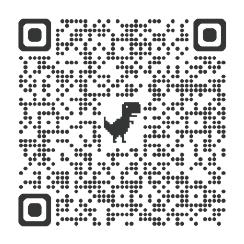

follow up on LinkedIn or by email.
After the weekend
• Send a 5-sentence note. Thank them, remind them where you met, restate your interest, ask one specific question, and include your résumé link.
• Do the thing they suggest. If they mention a club, class, or contact—follow through, then circle back with a brief update. Pro tip: Volunteer at a homecoming event. Working a check-in table is the best “backstage pass” to meet people.

LANSING – On Saturday, October 25 from 1 p.m. to 3 p.m., the Lansing City Clerk’s Office and multiple community organizations are organizing a Halloween-themed event to promote voter participation and citizen engagement in the 6th annual Souls to the Polls: Trunkor-Treat. There will be music, costumes, candy, and lots of fun.
At the newly opened Lansing Elections Office at 701 W Jolly Rd, Lansing voters will be able to participate in Early Voting by feeding their own ballot into a tabulator, in a similar experience to voting on Election Day. Any registered voter
in Lansing has the right to vote early in person up to and on Election Day.
Meanwhile, the outdoors will transform into a unique trick-ortreating experience. The public is invited to walk through the lot and collect candy, toys, and other fun items from Lansing’s many participating organizations. It is a fun, non-partisan event for the entire family.
Inside, voters of all ages will also be able to participate in a mock Halloween special election to learn the voting process by voting for their favorite Halloween character, favorite candy, and a “proposal”
about sharing candy with children who are unable to go out trick-ortreating.
“We are so excited to be able to work with community partners to engage the community and educate our youth about voting,” said Lansing City Clerk Chris Swope. “At the same time, we can provide this new option for early voting that voters approved, which will be convenient for many people with hectic schedules.”
For more information about voting, please visit lansingvotes.gov or contact the Lansing City Clerk’s Office at (517) 483-4131.
October is about celebration and community—pink ribbons, and the power of showing up for one another. Check out these events happening across Lansing, Jackson, Grand Rapids, Detroit, Ann Arbor, and Kalamazoo.
Oct 8 – Catch Me If You Can (touring Broadway) Fisher Theatre. A high-flying caper musical lands for a limited Detroit stop.
Oct 17–19 – DSO: Marsalis & ShostakovichOrchestra Hall. Cristian Măcelaru conducts; Wynton Marsalis’ music pairs with Shostakovich.
Oct 24 – Exhibition Opening: “Mary-Ann Monforton: Heartland”MOCAD. New fall show opens with an evening reception. Eastern Market
Detroit Harvest Fest — Oct 25–26 (food trucks, live entertainment, family fun) Awesome Mitten
October events in Detroit — via Eventbrite, various music, arts, culture, and community events. Eventbrite
Jack O’ Lanterns Unleashed — at Ingham County Fairgrounds, Oct 9–19, a family-friendly fall event. Lansing
Downtown Lansing Inc Events — Trivia nights, karaoke, “Rodriguez Fest,” DLI “Ask Me Any-

thing,” etc. downtownlansing.org
Grand Ledge Fall Festival (in the area) — part of Lansing fall guide listings. Lansing Mom
Webster Fall Festival — fall arts/crafts event in Lansing area via Eventbrite. Eventbrite
Community Events (East Lansing) — Farmers Market Oct 12, “A Wrinkle in Time” children’s theatre, and other seasonal events. cityofeastlansing.com
Oct 14–18 – Disney’s Beauty and the Center. Classic musical returns to campus.
Oct 18–19 & 25–26 – Boo at the Zoo (Family) Potter Park Zoo. Costumes, treats, animals; daytime, kid-friendly.
All month – Library Family Programs & Storytimes (Multiple branches)Capital Area District Libraries.
STEM, storytimes, crafts; check branch listings.
The Power of Pollinators — at John Ball Zoo, Oct 8, 2025 experiencegr.com
Eric Church concert — Van Andel Arena, Oct 10 experiencegr.com
Brandon Lake concert — Van Andel Arena, Oct 11 experiencegr.com
Grand Rapids Marathon 2025 — Oct 19 experiencegr.com
Tuesdays in Oct – “Tuesday Evening Series” (Free/Recurring)Downtown/various venues. After-work happenings around the city.
Oct 17–18 – Grand Rapids Symphony: “Pictures at an Exhibition”
DeVos Performance Hall. Mussorgsky’s showpiece with full orchestra.
Oct 28 – Autumn Nights at Meijer Gardens (Music + Gardens)Frederik Meijer Gardens. Evening event with live music (e.g., Big Street Brass), seasonal ambience.
ANN ARBOR / YPSILANTI
Michigan Arts Festival — recurring daily until Oct 26 in Ann Arbor (various venues) Destination Ann Arbor Scan to read full story

Logan Taylor is not just writing a book, she’s writing her way free.
A single mother of two, survivor of chronic illness, and now first-time author, Logan’s new memoir In My Eyes: Searching for Self-Worth is a healing anthem. More than a memoir, it’s a mirror. A movement. A declaration that no matter how dark it gets, you can still become something beautiful.
“I want people to understand—it doesn’t matter what you’ve been through,” Logan told The Chronicle. “I was abused. I dropped out of high school. I battled chronic illness. But I’m still here. Still successful. And I finally have something to show for it.”
The Fast That Birthed a Book

The birth of In My Eyes came during a 75-day fast, no
alcohol, no sugar, no Red Bulls. Just water, prayer, and clarity.
“They say prayer is when you talk to God. But meditation? That’s when He talks back,” Logan shared. “In those quiet moments, I heard Him say: Write.”
so she did.
Within five days, the foundation of In My Eyes poured out of her. Within a week, it was complete. She almost didn’t attend the Author's Expo & Book Fair (Part of the SouthSide Festival Series) hosted by longtime mentor, Hakim Crampton. This is where her creative path would expand, but something told her to go. There, she met Chronicle Publisher Yanice Jackson, whose unconventional books combine narrative with photos, legacy, and scrapbook-style vulnerability. She also met other authors and had a chance to reconnect with her long-time mentor Hakim.
In Lansing, radio has always been more than just airwaves—it’s a heartbeat, a rhythm, a legacy passed mic to mic. Few embody that spirit today like The Mighty Span Daniel, the #1-mid- day radio personality in Mid-Michigan and proud co-host of The Sunday Chronicle on Stacks 92.1 FM, sister station to Q106 FM.
Span’s journey to the mic wasn’t a straight line. Born and raised in Detroit, he once juggled life as a two-sport All-State athlete and Honor Society student. Over time, his pursuit of education spanned three institutions and 222 credit hours, but what stuck wasn’t a degree. It was his voice. His presence. His ability to strike a chord every time he cracked the mic.
“Every time I get on the mic, I get to say something uniquely difficult,” he
says.“There aren’t many ways to express the Black perspective in rock radio—but we’re out here. Black people invented this music too.”

Known for his interviews with icons like Slash, Gavin Rossdale, and Sammy Hagar, Span has built more than just a following—he’s built trust.
As a creative voice in radio, podcasting, and comedy, his presence helps bridge
audiences, genres, and generations.
Though he never met Chronicle Founder Jay Price, Span is connected to the legacy through Yanice Jackson, Jay’s daughter and current publisher of The Chronicle News. More than a co-host on The Sunday Chronicle, Span is a mentor, collaborator, and cultural amplifier.
“Your whole energy was different,” Logan said of Yanice. “You didn’t just talk about helping me—you actually helped. And something clicked.”
She left that expo, went straight to Applebee’s, and celebrated the beginning of a new chapter, literally.
Diagnosed with lupus and rheumatoid arthritis in 2016, Logan has been navigating invisible illness for years. Fatigue, swelling, chronic pain, and a condition called “malaise”, a heavy, inexplicable exhaustion, have marked her days.
Scan to read full story
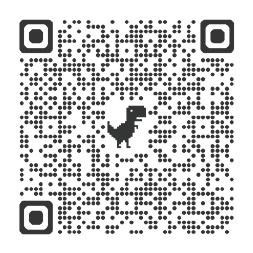
“I saw a small business from a Black person that happened to be a woman, and I wanted to be a part of it. The Chronicle is more than a paper—it’s an expression of Black humanity.”
He stepped in to help produce the show when needed and quickly became integral to its growth. His motivation? Seeing Black stories told with power, depth, and dimension. From podcasting and stand-up comedy to his own rock/ MMA show, Beats and Beatdowns, Span sees media as a vehicle for impact, not just content.
“Teaching is a way a piece of yourself can live on. Watching the show evolve—and knowing I’m helping pass something forward—
Scan to read full story




